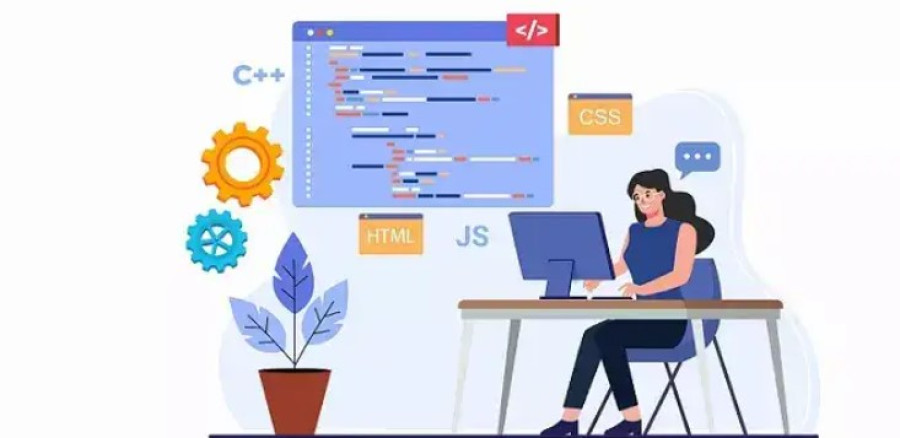Have you ever marveled why a good number of Indian graduates find it so hard to come by appropriate jobs to work? Degree do not always meet the qualifications of employers. Skill India Mission is the response to this gap as it enables the young generation to obtain practical skills, highly needed in the current competitive workforce.
Understanding Skill India: Purpose and Scope
Initiated in 2015, the Skill India Mission is a long-term government program that plans to bring 400 million Indian young people to the sector by 2022. It deals with the underlying failure of aligning education and labour market needs. However, although traditional education involves largely theoretical aspects and concepts, Skill India gives a lot of emphasis on actual, vocational, and technical knowledge that applies to a particular industry. The scheme is organized within such schemes as Pradhan Mantri Kaushal Vikas Yojana (PMKVY), National Apprenticeship Promotion Scheme, and several training programs in different sectors. Recently I paid a visit to a PMKVY center in Rajasthan and saw by a first-hand experience on how they are operated. Young adults were eagerly being trained in practical and industrial type of areas like plumbing, carpentry, hospitality, and information technology services. Classes are usually between three months to one year and once the trainee completes the course, they are usually employed in the spot. Skill India is not a training program, but a gateway to respectable and livable life with millions of Indian young people.
Real-Life Impact: Success Stories from Ground Level
Nothing tells the success of Skill India more than individual success stories when it comes to evaluating its performance. As an example, one can refer to Suman, a Bihar girl who attended a training course concerning beauty and wellness within the framework of PMKVY. Prior to the training, she used to be unemployed and lived under the poverty line. Her training bore a good fruit as she started a small salon upon her completion that drastically boosted the economic security of her family in the village. Just like Rajesh of Jharkhand who was imparted with some automotive skills and hence obtained employment in a well-known automobile company in Kolkata thereby boosting his earning capacity tremendously. These are not one off experiences, as going by official records, Skill India has already trained more than 13 million people and of that population, about 50 percent of them have been employed within a very short span of time. It is evident that the Skill India can change lives through these changes as we see here. Rather than remaining passive and engaging in less productive activities like excessive gaming or endless parimatch registration online, youth now have real opportunities for professional growth and financial independence.
Key Challenges Faced by Skill India
Although that has delivered positive results, Skill India has major problems to deal with in order to achieve long-term achievements. Among the biggest problems, one can find unequal access to training centers as many rural regions are underrepresented. These swatches are also compounded by inadequate infrastructure and lack of qualified trainers which negatively influence the quality and accessibility of training. The other severe problem is industry alignment. Every training module does not exactly follow the skills that are required by employees and this leads to occasional mismatch. Moreover, there is high dropout rate because the trainees do not receive financial support. As I engaged the trainees in Uttar Pradesh, most referred to the inability to sustain living on minimal costs during training, which often prompted some to drop out in the middle of the course. Challenges such as the need to have a seat and receive a living wage are best dealt with through an active cooperation of government, the private sector employers and local communities. Some of the ways in which this can be practically solved is to pay more government subsidies, stipends during training period, better course design with employer suggestions possible and lot of investment should also be made in training the trainers and also the infrastructure especially in the rural places.
Digital Innovation: A Catalyst in Skill Development
Digital tools increase the reach and efficiency of Skill India by a great margin. Online courses, certification, and opportunities to get an employment can be easily accessed with platforms such as the Skill India Portal. The emergence of cheap smartphones and data packages opens the opportunities of digital learning to young people in rural regions effectively, overcoming a geographical distance. Virtual Reality (VR) and Augmented Reality (AR) have introduced new ways of training, especially in automotive, healthcare, and manufacturing industries, as they engage learners in the safe environment of training or simulation. During one of my visits to a training center in Haryana, I happened to see trainees practicing the operation of complicated machinery using AR-based simulators, which have enhanced safety and lowered the cost of training remarkably. Digital innovation stimulates transparency, accountability, and monitoring as well. The progress of the trainees will be monitored in real-time and the quality of improvement will be ensured. Digital transformation is the only way to make Skill India ready for the future as the scale and efficiencies of delivering skills training in India in a fast, effective, and efficient manner will increase exponentially.
Role of Private Sector: Essential Partnerships for Success
The sustainability and effectiveness of Skill India need the involvement of the private sector. Such large organizations such as Tata, Mahindra, and Infosys have already joined in with Skill India, providing money, training centers, and job opportunities. An example is of Tata Motors which has set up other automotive skill centers where training and industry needs are linked directly making the student to be employed as soon as he or she gets out of school. The partnership between Mahindra and advance agricultural training is of great help to the rural youths who number over thousands of young people. Such collaborations do not only provide funding to the training but also make programs industry-relevant. At a corporate seminar in Mumbai an HR executive of a major IT company said they will be dependent on Skill India to get skilled people and that is where the two will get a mutual gain. Also, by engaging in such partnerships, a scarcity in skills in the various fields is overcome as it becomes a win-win situation to both businesses and trainees. Hence, the development of the role of the private sector further on is a strategic priority to be able to cover the skills gap on a sustainable and successful basis.
Conclusion
The Skill India Mission has become an important driver as this project transforms India in terms of employment, harnessing the power of young people by providing work-oriented knowledge and skills. Its effects are much more than just about taking people off the unemployment line, it changes lives, decreases poverty and constructs a strong nation economy. Nonetheless, it is necessary to tackle the current issues associated with improving infrastructure, perfection of courses, and financial assistance. Its results will also be strengthened by improvement of digital solutions, as well as increased cooperation with the private sector. By committing to these strategies, Skill India Mission can effectively empower millions of Indian youths, redirecting their energies from idle pursuits like excessive social media or casual parimatch registration online, towards meaningful careers and economic independence. Through continuous investments on increased skill set, India will be guaranteed that this is a way of keeping young people productive, confident and also fully equipped with what is required by the asking work force in a world that will rapidly be changing.









